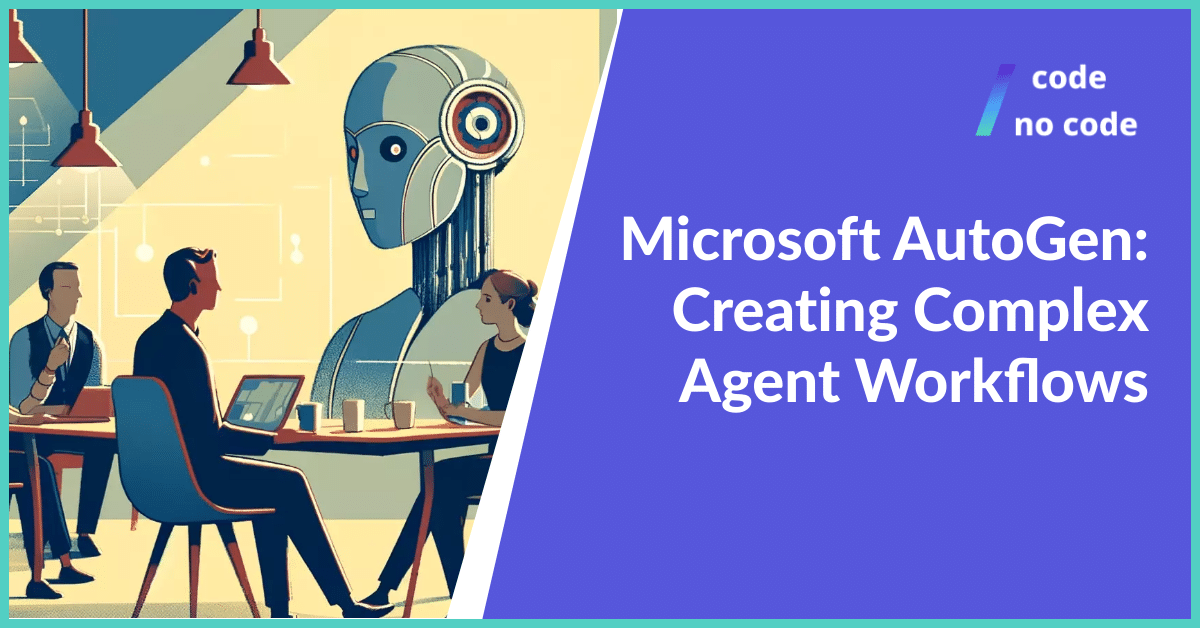
Top 10 Text To Music AI Tools
You couldn’t even dream of making music in minutes a few years ago, but now it’s possible and easy. Text to music AI tools turn written text...
As AI advances every day, we are seeing more advanced AI tools. More tools have been released that allow you to create an AI agent and workflow configurations that can perform multiple tasks at the same time while communicating with each other.

We will take a look at what AutoGen is, how it can help you create multiple agents, and whether it is worth using.
AutoGen is an open-source project focused on simplifying the development of applications that rely on large language models (LLMs). It offers a framework for creating multi-agent conversations where these LLM agents can work together to achieve a task.
The main purpose of AutoGen is to allow developers to create applications that use large language models (LLMs) for complex tasks through multiple AutoGen agent collaboration and agent interactions.
AutoGen, like other AI agent workflow applications, offers similar benefits and key features, including:
And if you are unfamiliar with programming, you can also use AutoGen Studio to create AI agent workflows in a more user-friendly virtual environment.
There are a few ways to get started with agent workflows, here are some of the official installations you can do:
The easiest way to start with agent workflow configuration:
AutoGen requires Python version >= 3.8, < 3.13. It can be installed using pip:
pip install pyautogen
Minimal dependencies are installed without additional options. You can install extra options depending on the feature you need.
Even if you install and run AutoGen locally outside of Docker, the recommended and default behavior of the agents is to perform code execution in Docker.
You can find detailed instructions on how to install AutoGen here.
AutoGen can be used for a variety of work areas to create multiple agents. It can be used to create a marketing team that can do research, analysis, and campaign execution, or a sales team that can find potential customers and more.
An article published by Mick Lynch details the development and implementation of “HospitalGPT”, a project using a multi-agent system based on AutoGen.
Lynch sees a need for healthcare organizations to engage in proactive outreach as they move towards value-based care models. The aim is to reduce downstream costs of care by implementing outreach programs for high-risk patient groups.
The solution involves a multi-skilled team working together. The process starts with a human user defining a high-level goal, such as sending outreach emails for colonoscopy screenings. This goal is further detailed by various AI agents: a planner, a critic, an epidemiologist, a data analyst, an executor, and an outreach agent.
These agents work together to identify the target patient population, retrieve data, and create personalized outreach emails. You can see the output example yourself in this link.
Autogen, a Microsoft framework, is used to build the project. It includes two models: GPT-4 from OpenAI for high-level logic tasks and the Mixtral 8x7B model from Mistral.AI for less complex tasks, such as email generation. This implementation choice balances performance and cost.
This is one of the most impressive and useful uses of AutoGen that I have found. Although if you would browse the forums a bit more and see peoples thoughts about the tool it seems as though it is not perfect and not a 100 percent reliable yet.
AutoGen and CrewAI are useful tools for multiple agent configurations to work together on a task. These agents can communicate and even establish a hierarchy of interactions.
Both tools are open-source and relatively new, so we can expect significant improvements in the near future. It will be exciting to see the real-world applications that will become possible.
AutoGen has an AutoGen studio that allows even those without coding experience to try it out. The studio is designed for people who are not familiar with coding environments.